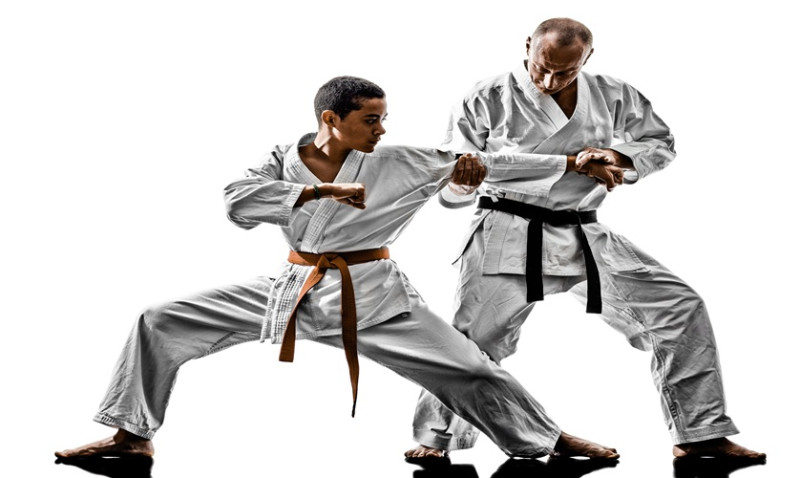
Keeping young students engaged during martial arts classes is one of the biggest challenges instructors face. The balance between discipline and entertainment can feel like walking a tightrope—add too much seriousness and kids get bored; introduce too many silly games and you risk losing the structure and respect that martial arts is built on. So how do you teach fun martial arts sessions to kids without resorting to games that feel more like birthday party time than a training class? Keep reading. This blog breaks down strategies to inspire a love for martial arts through movement, learning, and motivation—without ever compromising on quality or discipline.
Understand What “Fun” Really Means for Kids
The key to engaging children in martial arts is understanding what “fun” means from their perspective. Fun doesn’t mean chaos. For many children, fun actually comes from learning something new, mastering a challenge, and feeling accomplished. Structured progress, recognition from instructors, and supportive peers are all components of fun. Your job is to integrate these into your lessons.
Children love moving. They love stories. They love copying what they see. Martial arts already lends itself to all of these—but only if this potential is unlocked by an instructor who knows how to harness it. Visualisation, encouragement, and movement-driven engagement (not mindless repetition) are what will keep students motivated and focused.
A class that earns smiles from kids AND respect from parents will balance excitement, physical challenge, visual demonstration, and goal-setting. “Fun” should never equal “foolish” in a dojo!
Replace Silly Games With Martial-Arts-Themed Challenges
Games aren’t bad in themselves—they become unhelpful when they dilute the purpose of training. Instead, swap games for challenges directly linked to martial arts techniques. These challenges maintain the directionality of the class, rewarding effort and repetition, while still keeping the atmosphere light.
Below are a few ideas for replacing traditional “silly” games with mission-based martial exercises:
- Balance Missions: Create a “ninja path” using foam pads or mats. Students must balance through them with various stances.
- Power Push: Have kids try to break through soft pads using proper punching or kicking form—rate for technique, not just power.
- Speed Roundhouses: See how many roundhouse kicks students can land on a target in 20 seconds, with proper form.
- “Sensei Says” Technique Edition: A version of Simon Says adapted to drill sequences like blocks, punches, or stances.
These exercises not only sharpen martial arts skills—they feel fun because they're active, engaging, and goal-oriented.
Structure Your Class With Purpose From Start to Finish
If you want to keep kids engaged without distractions, the structure of your class is essential. Kids thrive on routine. Each segment of your session should have a clear purpose and seamless transitions. Below is a sample structure that maintains flow and fun:
| Segment | Description | Time |
|---|---|---|
| Warm-up | Dynamic stretches, jogging, agility drills with martial arts moves (lunges into stances, push-ups for power) | 10 mins |
| Technique Focus | Introduce striking, blocking or stance focus for the lesson—linked with a short story or scenario to visualise purpose | 10-15 mins |
| Drill Challenge | Partner or solo drills that reinforce the technique in a timed, motivating setup—include light competition | 10 mins |
| Combos or Mini Sparring | Put techniques together in short combos or guided sparring approach with plenty of instructor feedback | 10 mins |
| Cool Down & Reflection | Breathing exercises, quiet reflection, highlight good behaviour or progress from individual students | 5 mins |
A class that flows well keeps kids mentally and physically engaged. Transitions should be purposeful—language like “Let’s level up” or “Mission complete! What’s next?” keeps energy high and minds focused.
Use Visual and Story-Based Teaching Techniques
Kids respond incredibly well to visual and narrative instruction methods. Instead of just telling them to “punch,” why not say “Punch like you're breaking free from a robot's grip”? By painting the action with a story—even briefly—you activate imagination and movement in one go.
Here’s a simple way to integrate story-based techniques:
- Stance as a Superpower: Explain that their stance is their superhero base. The more solid it is, the more “powers” (kicks, punches, blocks) they can unlock.
- Animal Movement: Relate footwork to tiger pounces, snake strikes, or crane balance—engages imagination while emphasising movement patterns.
- Hero Mission: Frame technical practice around saving someone or completing a dojo quest. Make sure training steps lead to the mission's “win.”
Remember—the best martial artists aren’t just disciplined, they’re creative. Using story prompts taps into children’s natural learning processes while keeping everything thematically relevant to martial arts.
Celebrate Progress with Purpose
Rewards and recognition don’t just keep kids motivated—they also reassure parents of a class’s value. That said, avoid overpraising or using meaningless sticker-style rewards. Instead, highlight achievements tied to effort, behaviour, or technical improvement.
Here are a few ways to celebrate progress effectively, while keeping lessons proportional and focused:
- Black Belt Attitude: Recognise students showing discipline, respect, or encouraging others—not just flashy technique.
- Weekly Focus Badges: Rotate badges or patches earned for mastering kicks, showing kindness, or learning terminology.
- End-of-Class Shout-Out: Spot a few students each class who did something excellent and briefly explain why to the group.
- Progress Cards: Maintain cards showing how students are progressing in fundamental areas—give visual proof to parents.
By focusing praise where it matters (effort, growth, commitment), you make training feel worthwhile while building intrinsic motivation. It keeps the environment fun without robbing it of purpose.
Involve Parents in the Class Culture
Parents want to know their children are having a good time—but that they’re learning something meaningful too. Instructors who keep communication open with parents establish trust and encourage retention. It also reduces pressure to make classes overly entertaining, because parents see value beyond energy alone.
Invite parents to watch milestone testing, give feedback after class, or send occasional progress updates via email or child’s training card. Small gestures go a long way in reinforcing the idea that this academy is more than an after-school time-filler—it’s a place where their child is building skills for life.
When parents observe focus, discipline, AND joy—they become your best advocates.
Final Thoughts: Lead With Purpose, Motivate With Passion
Delivering a successful kids martial arts class is all about flipping the script—less comedy, more connection. Fun comes naturally when kids feel like they're accomplishing something real. You don’t need to become a clown or run relay races to keep their attention—instead, lead with a combination of motivational energy, exciting drills, creative visualisation, and a strong message behind every movement.
When your classes are fun because they’re challenging, creative, and rewarding, you create students who stay for the long run—and parents who proudly support you from the sidelines.
So ditch the dodgeballs and try these strategies instead. You’ll be amazed at how focused, fun, and fulfilling your kids martial arts programme can become.






